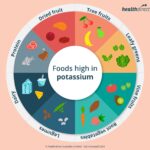For health-conscious consumers seeking to avoid Genetically Modified Organisms (GMOs), the USDA organic label often seems like a safe haven. The common perception is that organic food is strictly GMO-free. However, the reality is nuanced, and understanding the intricacies of organic certification is crucial to making informed choices. When you buy organic, are you always buying GMO-free? Let’s delve into the details.
The Allure and Concerns Surrounding GMOs
GMOs are plants or animals whose genetic makeup has been altered to exhibit desirable traits. Examples include apples resistant to browning, potatoes immune to pests, and faster-growing fish.
The primary concern lies with “super-crops” engineered to withstand herbicides, particularly glyphosate-based herbicides like Roundup. These crops allow for increased herbicide use, potentially contaminating our food supply and environment. The call for GMO labeling stems from the desire to avoid supporting agricultural practices that rely heavily on these chemicals. Therefore, the confusion arises when questions are asked if certified organic food might contain GMOs.
Organic Standards: A Strong Stance Against GMOs
The good news is that organic farming practices explicitly prohibit the use of GMO seeds and feed. Strict regulations are in place to enforce these standards. When you purchase certified organic products like apples, squash, eggs, or meat, you can generally trust that they are GMO-free.
 Fresh organic vegetables from a garden, representing healthy eating
Fresh organic vegetables from a garden, representing healthy eating
So, where does the confusion stem from?
Unraveling the Rumors: GMOs and Organic Certification
Speculation arose following the passing of a GMO labeling bill, suggesting that GMO seeds raised using organic methods could be considered organic. FactCheck.org debunked these claims, tracing them back to concerns that a new definition of “bioengineering” might allow the USDA to certify GMOs as organic if raised using organic processes.
Fortunately, the USDA maintains a firm stance against certifying products made using gene deletion, gene doubling, foreign gene insertion, or gene repositioning as organic, irrespective of future changes to the definition of bioengineering.
However, the story doesn’t end there. Some organic products may not be as entirely GMO-free as the USDA’s regulations might suggest.
GMOs in Disguise: Where to Be Vigilant
Careful label reading is vital to uncovering potential GMO exposure.
“Made with Organic Ingredients”: A Loophole
Products labeled “Made with organic ingredients” only require 70% organic content. The remaining 30% may include GMOs. This is a crucial distinction to be aware of.
The National List: Allowed Non-Organic Ingredients
Even 100% certified organic products can contain non-organic ingredients listed on the USDA’s National List. Examples include sausage casings (potentially from animals fed GMO feed), celery powder (often high in pesticides if non-organic), and certain colorings derived from non-organic sources.
Cross-Pollination: An Unavoidable Risk
Cross-pollination between GMO and non-GMO crops is a significant concern. Factors like supplier errors and wind/animal-borne seed dispersal can lead to GMO contamination. Studies suggest a considerable percentage of organic corn has been contaminated with GMOs.
Non-GMO Project Verified: Not Always a Guarantee
While the Non-GMO Project Verified label is helpful, it doesn’t offer the same comprehensive guarantees as the organic label. The Non-GMO Project allows for a 0.9% GMO threshold, meaning products can still bear the seal with trace amounts of GMOs.
Strategies for a GMO-Free Kitchen
Despite these challenges, you can minimize your exposure to GMOs by adopting a simple strategy: prioritize whole foods from trusted sources.
A certified organic steak or apple is unlikely to contain GMOs. However, processed organic foods like chicken nuggets or apple pie may contain GMOs depending on the ingredients used. The fewer the ingredients and the more you know about the farmer’s practices, the more confident you can be in your GMO-free choice.
Engage with your farmers and producers, ask questions about their practices, and remember that labels like USDA organic are valuable guides but not absolute guarantees.
Ultimately, informed choices are the best defense against unwanted GMOs in your diet.
